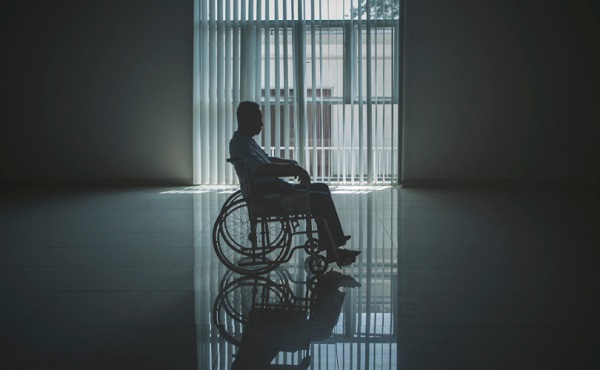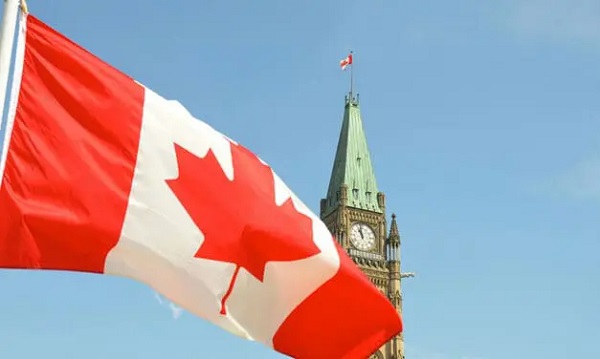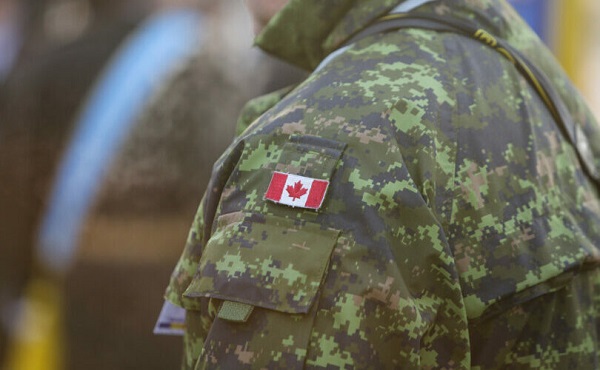MAiD
People with disabilities are vastly overrepresented in Canada’s latest assisted suicide figures

From LifeSiteNews
By Alex Schadenberg of Euthanasia Prevention Coalition
In 2023, Canada recorded over 15,300 euthanasia deaths, with disabilities, poverty, and loneliness driving decisions. Assisted suicide represented 4.7 percent of all deaths in Canada last year.
On February 6, 2024, after obtaining the euthanasia data from Alberta, Ontario, and Québec, the Euthanasia Prevention Coalition published an article stating that there were approximately 15,300 euthanasia (MAiD) deaths in Canada in 2023.
On July 8, 2024 we published an article with links to the euthanasia data from Alberta, British Columbia, Manitoba, Nova Scotia, Ontario, and Québec. We again predicted that there were about 15,300 euthanasia deaths in 2023.
READ: Canadian seniors say they were offered euthanasia when faced with increased hospice costs
On December 11, 2024, Canada’s Ministry of Health released the Fifth Annual Report on Medical Assistance in Dying which indicates that there were 15,343 reported euthanasia deaths representing 4.7 percent of all deaths in 2023.
.jpg?resize=320%2C267&ssl=1)
Why did Canada’s Ministry of Health wait until December 2024 to release the 2023 euthanasia data when the report essentially concerns numbers and data while lacking information on the actual reason for people wanting to be killed by euthanasia?
Interesting data in the report:
- Of the 15,343 reported euthanasia deaths: 95.9 percent were Track 1 deaths (the person was deemed to have a terminal condition); 4.1 percent were Track 2 deaths (the person was deemed as not having a terminal condition).
- People with disabilities accounted for 33.5 percent of the Track 1 euthanasia deaths and 58.3 percent of the Track 2 euthanasia deaths. In 2022, 27 percent of Canadians were people with one or more disabilities. People with disabilities are over-represented in Canada’s euthanasia statistics.
- 95.8 percent of those who died by euthanasia were Caucasian (White) while fewer than 1 percent were First Nations people. In 2022, 69.8 percent of Canadians euthanized were Caucasian and 5 percent were First Nations people.
What is happening in British Columbia, Ontario and Québec?
When analyzing the Fifth Annual Report we question, “What makes British Columbia, Ontario and Québec different than the rest of Canada?” In 2023, euthanasia deaths increased by 36.5 percent in Québec, 30.3 percent in Ontario, and 18 percent in British Columbia. When examining the data from the other seven provinces, the next highest rate of increase was Alberta with a 6.4 percent increase in euthanasia deaths.
Québec has the highest euthanasia rate with 5601 reported euthanasia deaths – this represents 7.3 percent of all deaths and 36.5 percent of all Canadian euthanasia deaths. Canada’s 2021 Census indicated that 23 percent of Canadians live in Québec.
We question the accuracy of the Québec euthanasia data. CBC Radio Canada reported on March 9, 2024, that the Québec government had reported that there were 5,686 reported euthanasia deaths in 2023, but the Fifth Annual report states 5,601.
The analysis of the Québec Commission on End-of-Life Care Eighth Annual Report (April 1, 2022 – March 30, 2023) by Amy Hasbrouck indicated that there were 190 euthanasia deaths that may not have been reported by the doctor or nurse practitioner who carried out the death. 190 unreported euthanasia deaths is serious.
Euthanasia for frailty was listed as a reason in 1,392 deaths, representing more than 9 percent of all euthanasia deaths. In 92 euthanasia deaths, frailty was listed as the only reason.
Euthanasia for chronic pain was listed as a reason in 933 deaths, with 23 of the deaths listing chronic pain as the only reason.
Euthanasia for dementia was listed as a reason in 241 deaths, with 106 of those deaths listing dementia as the only reason.
Similar to other jurisdictions, the reason for seeking euthanasia was highly oriented to the person’s social condition.
- 96 percent listed “Loss of ability to engage in meaningful activities,”
- 87 percent listed “Loss of ability to perform activities of daily living,”
- 70 percent listed “Loss of dignity,”
- 55 percent listed “Inadequate pain control.”
It is important to note that loneliness and isolation was listed in more than 21 percent of all euthanasia deaths representing more than 3,200 people.
People with disabilities should be concerned that more than 50 percent of those who died identified “loss of independence” and almost 50 percent listed being a perceived burden on family, friends, or care givers.
People with disabilities should also be concerned that “other conditions” was the highest identified factor for euthanasia. For people with disabilities, 46.2 percent of the Track 1 deaths were based on “other conditions” and 62.9 percent of the Track 2 deaths were based on “other conditions.” “Other conditions” is not further defined and indicates a serious concern with discrimination of people with disabilities.
We recognize another concern related to the difference in income levels for Track 1 and Track 2 euthanasia deaths. People who died by Track 2 euthanasia were more likely to have a lower income than the Track 1 deaths.
More analysis of the Fifth Annual Report needs to be done. The report includes more information than previous years’ reports but it does not examine why people are asking for euthanasia nor does it uncover deaths that may be outside of the parameters of the law.
In October 2024 the chief coroner of Ontario released a report from the Ontario MAiD Death Review Committee reporting that between 2018 and 2023 there were euthanasia deaths driven by homelessness, fear, and isolation and that poor people are at risk of coercion, indicating that Canadians with disabilities are needlessly dying by euthanasia. The data from the Ontario Death Review report indicates that in the reported time period there were at least 428 non-compliant euthanasia deaths and 25 percent of the euthanasia providers violated the law.
The Ontario MAiD Death Review report has three parts (Part 3) (Part 2) (Part 1).
The federal government needs to do a complete review of Canada’s experience with euthanasia.
Reprinted with permission from the Euthanasia Prevention Coalition.
Indigenous
Carney’s Throne Speech lacked moral leadership

This article supplied by Troy Media.
 By Susan Korah
By Susan Korah
Carney’s throne speech offered pageantry, but ignored Indigenous treaty rights, MAID expansion and religious concerns
The Speech from the Throne, delivered by King Charles III on May 27 to open the latest session of Parliament under newly elected Prime Minister Mark Carney, was a confident assertion of Canada’s identity and outlined the government’s priorities for the session. However, beneath the
pageantry, it failed to address the country’s most urgent moral and constitutional responsibilities.
It also sent a coded message to U.S. President Donald Trump, subtly rebuking his repeated dismissal of Canada as a sovereign state. Trump has
previously downplayed Canada’s independence in trade talks and public statements, often treating it as economically subordinate to the U.S.
Still, a few discordant notes—most visibly from a group of First Nations chiefs in traditional headdresses—cut through the welcoming sounds that greeted the King and Queen Camilla on the streets of the capital.
The role of the Crown in Canada’s history sparked strong reactions from some Indigenous leaders who had travelled from as far as Alberta and Manitoba to voice their concerns.
“It’s time the Crown paid more than lip service to the Indigenous people of this country,” Chief Billy-Joe Tuccaro of the Mikisew Cree First Nation told me as he and his colleagues posed for photographs requested by several parade spectators. “We have been ignored and marginalized for far too long.”
He added that he and fellow chiefs from other First Nations were standing outside the Senate chamber as a symbol of their status as “outsiders,” despite being the land’s original inhabitants.
Shortly after Carney’s election, Tuccaro and Chief Sheldon Sunshine of the Sturgeon Lake Cree Nation sent him a joint letter stating: “As you
know, Canada is founded on Treaties that were sacred covenants between the Crown and our ancestors to share the lands. We are not prepared to accept any further Treaty breaches and violations.” They added that they looked forward to working with the new government as treaty partners.
Catholics, too, are being urged to remain vigilant about aspects of the government’s agenda that were either only briefly mentioned in the throne
speech or omitted altogether. On April 23, just days before Carney and the Liberals were returned to power, the Permanent Council of the Canadian Conference of Catholic Bishops issued a statement outlining what Catholics should expect from the new government.
“Our Catholic faith provides essential moral and social guidance, helping us understand and respond to the critical issues facing our country,” they wrote. “As the Church teaches, it is the duty of the faithful ‘to see that the divine law is inscribed in the life of the earthly city (Gaudium et Spes, n. 43.2).’”
The bishops expressed concern about the lack of legal protection for the unborn, the expansion of eligibility for medical assistance in dying (MAID)—which allows eligible Canadians to seek medically assisted death under specific legal conditions—and inadequate access to quality palliative care. They also reaffirmed the Church’s responsibility to walk “in justice and truth with Indigenous peoples.”
Although the speech emphasized tariffs, the removal of trade barriers and national security, it made no mention of the right to life, MAID or the charitable status of churches and church-related charities—a status the Trudeau government had considered revoking for some groups.
On Indigenous issues, the government pledged to be a reliable partner and to double the Indigenous Loan Guarantee Program from $5 billion to $10 billion. The program supports Indigenous equity participation in natural resource and infrastructure projects.
Canada deserves more than symbolic rhetoric—it needs a government that will confront its moral obligations head-on and act decisively on the challenges facing Indigenous peoples, faith communities, and the most vulnerable among us.
Susan Korah is Ottawa correspondent for The Catholic Register, a Troy Media Editorial Content Provider Partner.
Troy Media empowers Canadian community news outlets by providing independent, insightful analysis and commentary. Our mission is to support local media in helping Canadians stay informed and engaged by delivering reliable content that strengthens community connections and deepens understanding across the country.
armed forces
Yet another struggling soldier says Veteran Affairs Canada offered him euthanasia

From LifeSiteNews
‘It made me wonder, were they really there to help us, or slowly groom us to say ‘here’s a solution, just kill yourself.’
Yet another Canadian combat veteran has come forward to reveal that when he sought help, he was instead offered euthanasia.
David Baltzer, who served two tours in Afghanistan with the Princess Patricia’s Canadian Light Infantry, revealed to the Toronto Sun that he was offered euthanasia on December 23, 2019—making him, as the Sun noted, “among the first Canadian soldiers offered therapeutic suicide by the federal government.”
Baltzer had been having a disagreement with his existing caseworker, when assisted suicide was brought up in in call with a different agent from Veteran Affairs Canada.
“It made me wonder, were they really there to help us, or slowly groom us to say ‘here’s a solution, just kill yourself,” Baltzer told the Sun.“I was in my lowest down point, it was just before Christmas. He says to me, ‘I would like to make a suggestion for you. Keep an open mind, think about it, you’ve tried all this and nothing seems to be working, but have you thought about medical-assisted suicide?’”
Baltzer was stunned. “It just seems to me that they just want us to be like ‘f–k this, I give up, this sucks, I’d rather just take my own life,’” he said. “That’s how I honestly felt.”
Baltzer, who is from St. Catharines, Ontario, joined up at age 17, and moved to Manitoba to join the Princess Patricia’s Canadian Light Infantry, one of Canada’s elite units. He headed to Afghanistan in 2006. The Sun noted that he “was among Canada’s first troops deployed to Afghanistan as part Operation Athena, where he served two tours and saw plenty of combat.”
“We went out on long-range patrols trying to find the Taliban, and that’s exactly what we did,” Baltzer said. “The best way I can describe it, it was like Black Hawk Down — all of the sudden the s–t hit the fan and I was like ‘wow, we’re fighting, who would have thought? Canada hasn’t fought like this since the Korean War.”
After returning from Afghanistan, Baltzer says he was offered counselling by Veteran Affairs Canada, but it “was of little help,” and he began to self-medicate for his trauma through substance abuse (he noted that he is, thankfully, doing well today). Baltzer’s story is part of a growing scandal. As the Sun reported:
A key figure shedding light on the VAC MAID scandal was CAF veteran Mark Meincke, whose trauma-recovery podcast Operation Tango Romeo broke the story. ‘Veterans, especially combat veterans, usually don’t reach out for help until like a year longer than they should’ve,’ Meincke said, telling the Sun he waited over two decades before seeking help.
‘We’re desperate by the time we put our hands up for help. Offering MAID is like throwing a cinderblock instead of a life preserver.’ Meincke said Baltzer’s story shoots down VAC’s assertions blaming one caseworker for offering MAID to veterans, and suggests the problem is far more serious than some rogue public servant.
‘It had to have been policy. because it’s just too many people in too many provinces,” Meincke told the Sun. “Every province has service agents from that province.’
Veterans Affairs Canada claimed in 2022 that between four and 20 veterans had been offered assisted suicide; Meincke “personally knows of five, and said the actual number’s likely close to 20.” In a previous investigation, VAC claimed that only one caseworker was responsible—at least for the four confirmed cases—and that the person “was lo longer employed with VAC.” Baltzer says VAC should have military vets as caseworkers, rather than civilians who can’t understand what vets have been through.
To date, no federal party leader has referenced Canada’s ongoing euthanasia scandals during the 2025 election campaign.
-

 conflict2 days ago
conflict2 days agoOne dead, over 60 injured after Iranian missiles pierce Iron Dome
-

 Crime13 hours ago
Crime13 hours agoManhunt on for suspect in shooting deaths of Minnesota House speaker, husband
-

 Business2 hours ago
Business2 hours agoCarney’s European pivot could quietly reshape Canada’s sovereignty
-

 Alberta2 hours ago
Alberta2 hours agoAlberta’s grand bargain with Canada includes a new pipeline to Prince Rupert




